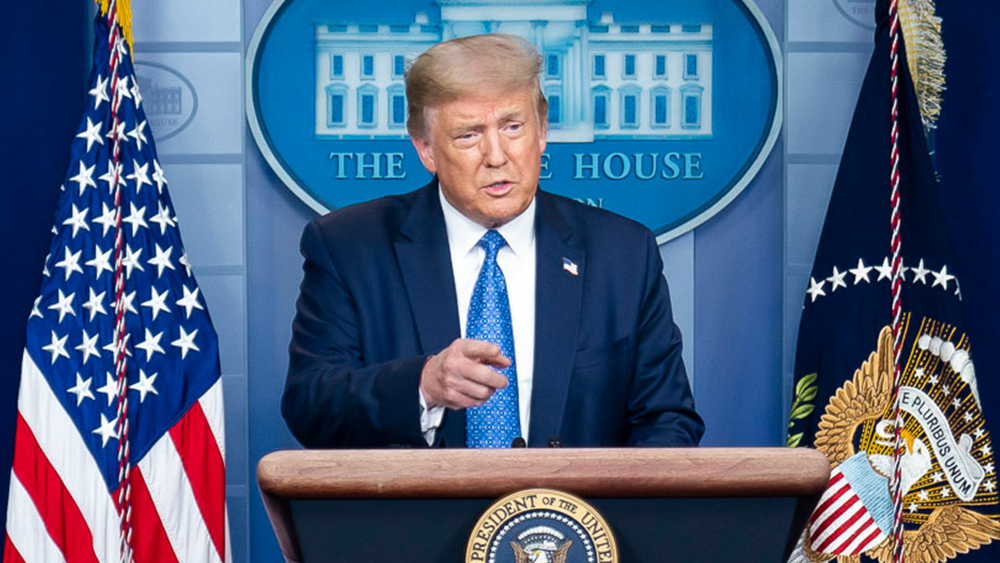Payments panic and the ending of fiat currencies
by Alasdair Macleod, GoldMoney:
 The unilateral response from governments to the coronavirus is to helicopter money to people and their businesses in unlimited quantities. Their priority is to keep the debt-driven Keynesian show on the road, and policy makers are approaching the task with unseemly gusto.
The unilateral response from governments to the coronavirus is to helicopter money to people and their businesses in unlimited quantities. Their priority is to keep the debt-driven Keynesian show on the road, and policy makers are approaching the task with unseemly gusto.
There was evidence that the credit cycle was already on the turn with the global economy entering its regular period of financial and economic crisis even before the coronavirus hit. Thinking it is only a matter of dealing with the pandemic before returning to normal is therefore a common and fatal mistake. The combination of current events is leading to an infinite problem: central banks, and the Fed in particular, are trying to backstop everything and they will undoubtedly fail.
The central issue is the dawning inability of the Fed, in charge of the world’s reserve currency, to keep financial markets under control. The quantities of money required to rescue the US economy and dollar-centric supply chains abroad are potentially far greater than anyone realises and will destroy not just the dollar, but the whole fiat money system of rigged financial markets upon which debt financing depends. The EU is in a similar but more parochial fix with the addition of a banking system visibly on the verge of collapse.
The timescale for the demise of unsound fiat currencies is likely to be very short, by the end of 2020 – exactly three centuries since a similar fiat currency experiment failed in John Law’s Mississippi bubble.
Introduction
Doubting Thomases must surely realise by now that the central banks are in danger of losing control over financial market prices, not just for a short period of time, but more drastically than that. Besides a new round of quantitative easing announced last Sunday – $500bn into Treasuries and $200bn into agency debt – the new target for the Fed funds rate was lowered to 0 – ¼ %. This 1% cut followed an earlier reduction in the funds rate of ½ % as well as last Thursday’s announcement of a $1.5 trillion cap on three-month and one-month repos. To these sums we must add the $60bn in purchases of coupon-bearing securities also announced last Thursday.
Taken together, that is a liquidity injection into the American banking system of $2.206 trillion, which in context will be the equivalent of a 59% increase in the Fed’s balance sheet since the repo crisis started in September.
A further source of monetary inflation is in the dollar swap lines with the Bank of Canada, Bank of England, Bank of Japan, the ECB and the Swiss National Bank.
Clearly, the Fed is doing everything it can to achieve a number of objectives simultaneously. It needs to ensure the funding is in place for the US Government, which is dramatically increasing its spending. It must ensure the banks have sufficient reserves so as not to foreclose on its customers, thereby preventing a deflationary contraction of bank credit. It needs to inject liquidity into wholesale money markets to ensure no financial entity becomes insolvent. It is trying to anticipate future negative effects of the coronavirus, which are likely to be far greater than anyone dares admit in public. Heroically, the Fed’s public mission is to rescue the American economy single-handedly by providing the money required. And last but not least, it must retain control over financial market pricing to deliver these objectives.
Over the last fortnight that control was demonstrably lost. Equities crashed and government bonds soared, but values of the latter were somewhat false, because in the absence of liquidity market makers increased their bid/offer spreads and reduced their size; that is to say the quantity of bonds they were prepared to deal in on the widened quote were nominal. As well as volatility, the market makers, being brokerage subsidiaries of the banks, were restricted in the amount of liquidity provided by their parents, reflecting a wider systemic shortage.
The Fed hopes that by providing an unprecedented quantity of dollar liquidity that normality will return, and all its objectives listed in the penultimate paragraph above can be achieved. But, returning to a theme of recent Goldmoney Insights, the relationship between the dollar and financial assets has become eerily similar to that between John Law’s livres and his Mississippi bubble three-hundred years ago. The massive printing of livres and livres bank credit to support Law’s asset bubble failed, firstly by undermining the purchasing power of his livres to zero measured against gold and silver, and then by failing to prevent a collapse in the targeted financial asset, his Mississippi venture.
Today, the situation is only different in that the Fed is trying to save the status quo rather than construct a new one. But from December 2015 the gold price began to rise from $1050 to current levels, which is the appropriate non-fiat measure of the dollar’s purchasing power. This fact says much about gold and silver’s reaction last week and this, which was to fall heavily in paper form, while physical demand led to shortages and premiums everywhere. And now we have credible reports of refinery output being curtailed, particularly in Switzerland’s Ticino canton where three of the large Swiss refiners are based.
After the mid-eighties, gold was used as a low interest rate form of collateral for the purchase of other higher-yielding assets. In recent years that function has ceased, and it has become a plaything of bullion banks, skilled at using futures and forwards to soak up speculative demand in a highly profitable fleecing of speculative interest. The continuance of this game depended entirely on the Fed and other central banks setting the framework for prices of financial assets in the wider context by retaining an iron control over markets. Recent events have shown that that has almost certainly come to an end and increasingly the bullion banks see a logic in getting out of the gold and silver paper business by squaring their books.
Estimating dollar liquidity requirements
It is worth noting that the global economy as well as that of the US is on the cusp of a credit cycle that was turning into its regular contractionary stage, even before the coronavirus exploded onto the world stage. The massive expansion of both base money and bank credit since the Lehman crisis coupled with American trade protectionism replicates the situation in late-1929 when the Wall Street crash began, the Dow fell 89% and the great depression followed. The twin vectors behind those events are of different relative force today. Then, trade tariffs were jacked up 30% on average by the Smoot-Hawley Tariff Act, more than today’s American protectionism against Chinese imports. But this time, the expansion of money and bank credit over recent decades is far, far larger, and we are entitled to expect a synergistic effect between these two factors leading towards a similar result.
That being the case, the coronavirus is an added burden on the world’s economy which was already tipping into a slump, and will be particularly damaging for its reserve currency, the dollar. The disruptions the pandemic brings to supply chains are a dramatic advancement and escalation of what would have happened over time anyway.
Across all businesses there are those which have assets that can be sold and have cash at the bank to draw down, and there are those whose cash and liquid assets are limited or barely exist. When the former category draws down on cash reserves, deposits at the banks are reduced. The banks then have to either borrow the difference in money markets or reduce their holdings of assets, usually in the form of loans, Treasury bills, Treasury bonds, commercial bills or commercial bonds. Inevitably, the choice will devolve down to a reduction in the banks’ individual balance sheets, satisfied by reducing their loan books and by asset sales.
On the other hand, there are businesses running on overdrafts, which will find out if their banks are still good for pre-agreed overdraft ceilings. Given the drawdowns on business deposits from their more liquid customers, it is likely they will seek to reduce overdraft ceilings to help balance their books.
But businesses also face decisions as to whether they and their customers will survive the pandemic. Government promises to help is usually offered in loans, in which case they will have to be repaid, merely putting off the evil day. Many SMEs will choose to close in order for their owners to rescue what they can rather than face a drift into bankruptcy. Some will try to survive by cutting costs, such as airlines laying off staff on unpaid leave, or by lengthening payment times, passing the problem to their suppliers.
The notional exposure of America’s banks to this aspect of difficulties faced by private sector businesses is illustrated in outstanding loans and leases, which according to the St Louis’s FRED database stands at $10.12 trillion.

FRED’s chart above shows how the last credit crisis caused a contraction in outstanding loans and leases, and we know that this crisis is bound to do so again. But what will be the scale of the developing credit crisis, given that by bunching payment issues the coronavirus has increased the impact and its suddenness?
To estimate a ballpark figure, we should look at gross output (GO). Unlike GDP, which captures final sales value, GO includes the payments between production stages, and is illustrated in FRED’s chart below.

The effect of the last credit crisis in 2008-2009 was significant, knocking about $4 trillion off the total. This time, with the added burden of widespread supply chain payment failures it obviously will be far larger. We can only guess what a national shutdown will do. If, as in Italy and France, Americans end up only being able to buy pharmaceuticals and food, that would preserve only 8% of GO. Payment failures will therefore be a significant part of the remaining $36 trillion of the GO statistic.
Loading...



